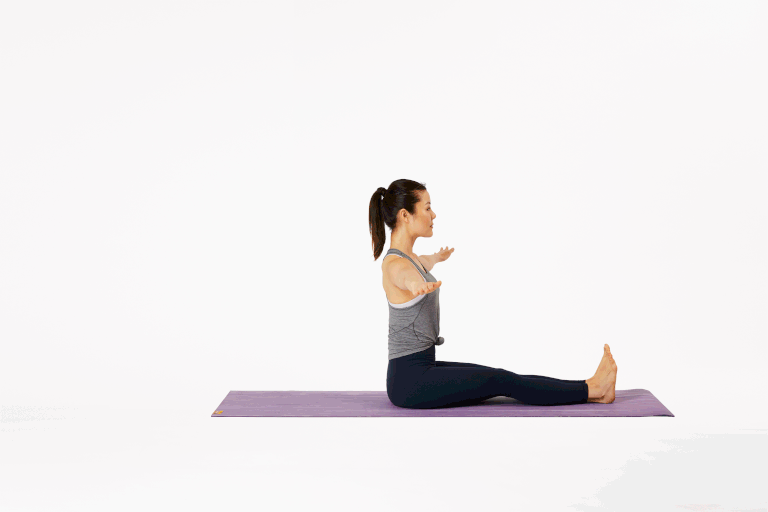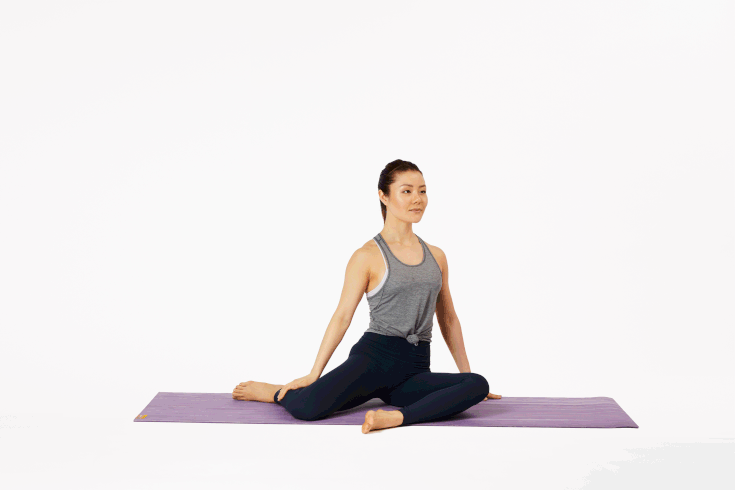
Joseph Pilates once famously said:
“If your spine is inflexibly stiff at 30 you are old. If it is completely flexible at 60, you are young.”
We’re built to move and stay active; for hundreds of thousands of years, through the process of evolution and natural selection, our bodies have adapted to literally allow us to keep moving. Until the invention of the chair.
When we stop moving regularly – or stop moving altogether - our body starts to adapt to that inactivity; parts of the body that were once mobile become less mobile or just become completely stuck and that can often lead to pain.
Most commonly in the UK, we see this in the spine and other joints like the hip and shoulders. According to the Office for National Statistics, almost 31 million work days were lost in the UK due to musculoskeletal problems including low back pain. The costs attributable to low back pain in the UK are £12.3 billion a year (business owners and managers take note), with £1.2 billion spent on treatment a year.
At a more local level, the debilitating impact of low back pain can affect your literal day to day life including things like getting out of bed, getting dressed, brushing your teeth, tying your shoes, walking your dog, playing with your children, making your dinner, your relationships. Anyone who has suffered low back pain, (my hand is firmly up), will know this list can go on and on; it’s like tooth ache in your back. If you have a stiff spine, you will lose part of your function and other parts of your body will inevitably start to (over) compensate.
In order to maintain the body’s normal function (movement), the spine needs to be adaptable as it helps transfer load through the body, which means the skeleton and its supporting infrastructure (muscles, ligaments, tendons, connective tissue), has to be able to move fluidly.

And where there is mobility, there is also, of course, stability; our body’s ability to support and stabilise against movement. Stability and mobility are interdependent; a finely balanced double act. Hypermobility is an example of where stability is compromised at the expense of mobility. If joints, muscles and connective tissue are not conditioned enough to support us as we move, we also run the risk of injury. And how do we achieve stability of joints? Through learning and understanding controlled movement; in pilates we call it ‘dynamic stability’, literally the ability to move one joint (or joints) whilst stabilising the supporting joint (or joints).
Pilates for improved spinal stability and mobility
Pilates is a perfect method for helping us maintain spinal mobility and stability because it is a low impact, non-competitive form of ‘functional exercise’ – helping us restore and maintain function for everyday life and a method suitable for all; I literally teach it to every age group!
The Body Control Pilates Method teaches some wonderful spinal articulation exercises for all planes of motion that can be easily adapted to individual needs. Spinal articulation is learning how to control and sequentially move your spine and can help to restore mobility and stability where it has been lost or compromised.

There are several benefits related to spinal mobility, including:
- Improved range of motion in the joints
- For injury prevention. Movement helps stimulate the creation of new synovial fluid inside the joints. This is crucial for articular cartilage to help prevent osteoarthritis
- Improved neuromuscular control for daily activities
- Faster reaction time and agility. If the spine is used to moving, the nervous system will be able to respond and adapt more quickly to any ‘forces’ it encounters, like a fall.
Want to try pilates for yourself?
I'm hosting a complimentary 40 minute pilates class on International Pilates Day, Saturday 2nd May at 12pm via Zoom for the business community. Space is limited to 12 people. If you would like to come and try pilates for yourself, then email me at hello@ostarapilates.com to book and I'll send you the joining link. As a thank you for taking part, you will automatically be entered into a *free prize draw to win a £20 gift voucher for Smith & Gertrude in Stockbridge (yip, pinot and pilates is a real thing!), as well as a 45 minute zoom pilates class for you and your work colleagues.

Try It At Home
Spinal articulation exercises to practice at home
If you can't make the Zoom call then here are a few of my favourite exercise from the pilates repertoire that help achieve that supple yet strong spine:
For full spinal flexion/extension: Standing Roll Down

How to do it:
- Stand with your back against a wall, the feet should be hip distance and parallel and about a foot step away from the wall, your head, shoulders and back should be in contact with the wall. The natural curve of your neck and lumbar spine should be apparent (e.g. do not flatten your low back against the wall)
- Take a breath in and as you start to exhale, tuck your chin to your chest then slowly start to roll down, peeling your spine away from the wall vertebra by vertebra, from the top of the spine as far as you can go. The crown of your head should be down towards the ground and arms hanging loosely.
- Stop when you can go no further – this will be different for everyone – breath in and as you exhale start to restack the spine vertebra by vertebra finishing with your head back up on top of your shoulders.
For rotation: Seated Spine Twist (for rotation in the upper body)

How to do it:
- Start sitting up on your sit bones, legs hip distance and parallel. Softely bend your knees if you are tight in the hamstrings.
- Lengthen your spine to the crown of your head and take both arms out into a T position in line with your shoulders
- Inhale to prepare and as you exhale, leading with the head, start to sequentially turn your upper body: head – neck – upper mid back to the right, keeping the pelvis stable
- When you have rotated as far as you can, inhale and then exhale to return to start position. Repeat to the left.
Hip Rolls (for rotation in the lower body)
How to do it:
- Lie in the relaxation position – back of the head, ribs, sacrum on the floor, soles of the feet on the floor, knees bent, inner thighs connected (together).
- Breathe in to prepare then exhale as you start to rotate your pelvis to the right. Your feet will roll and your legs will rotate with you (because they are attached to your pelvis). Your abdominals and oblique muscles are controlling this movement though, not your knees dropping, so move slowly with control rotating pelvis - low back – base of the ribs sequentially
- Hold for a breath in and exhale as you return your spine back to the mat sequentially so base of the ribs – low back – pelvis. Repeat to the other side.
For thoracic extension: Seated Breaststroke (targets upper mid back – a part of the spine that I find most people have become completely disconnected from)
How to do it:
- Sit in a comfortable seat (a chair works best I think). Feet are hip distance and parallel. Lengthen your spine.
- Bent your elbows to 90 degrees and take them in line with your shoulder, flip them to take the palms down to face the floor.
- Breathe in and as you breathe out start a breast stroke action with your arms, keeping the elbows lifted in line with the shoulders and focus on lifting through the breastbone as you draw the arms back.
For lateral flexion (side bending): Seated Mermaid

How to do it:
- Sit with your legs in a 90/90 position (one shin parallel in front of you, other parallel to your side).
- Place both hands on the floor at the sides of your waist.
- Breathe in as you raise your right arm up to the side of your ear.
- As you exhale start to side bend to your left sequentially head –neck – upper mid back, allowing the opposite hand to slide away from your body to facilitate the stretch
- Take a big breath in to the open side of your ribs (right side), exhale to re-stack the spine sequentially. Repeat to the other side.
Working from home a lot more?
If you find yourself sitting a lot more at home currently, then aim to introduce these into your daily routine. Aim to do at least two or three times each day and you can adjust the repetitions to suit you, but a goal could be to start with 4 or 5 and work up to 10 or 12. You can always add them to any existing activity programme to either warm the spine up at the start, or, use them as a cool down at the end.
Or you can join one of my weekly pilates at home classes running via Zoom every Monday evening, 6pm and 7:05pm. £10 a class. Email hello@ostarapilates.com to book.
*Please refer to the promotional terms and conditions.